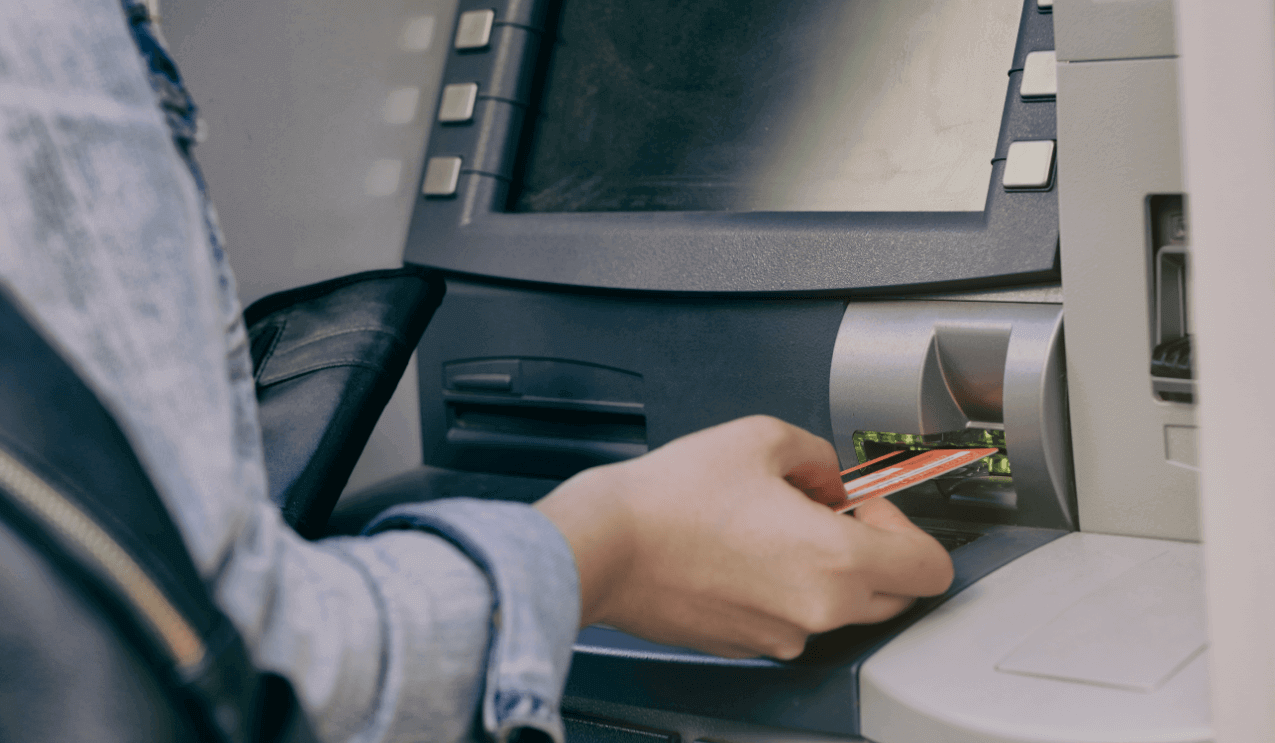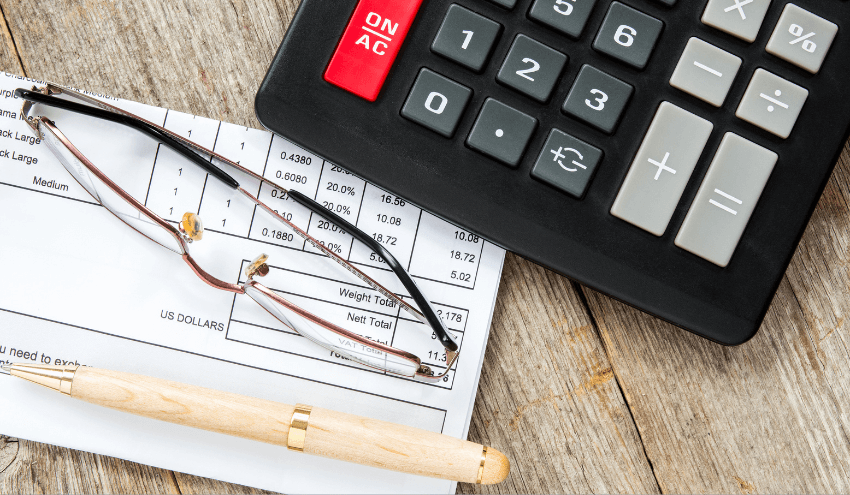A checking account is often one of the first financial accounts people open, and for good reason. It enables you to securely store your money, easily pay for everyday expenses, and more.
Still, as your finances evolve, so should the way you manage those finances. A checking account is incredibly helpful and convenient, but not every dollar you have needs to stay there. In fact, having the majority of your cash in your checking account isn’t recommended by most experts.
It’s a balance—you need enough money in your checking account for easy access, but you also want to take advantage of other types of accounts that better utilize your money. This article will go over best practices for using a checking account, including how much money you should generally keep in it.
Keep Track of Your Expenses
What you put into your checking account is proportionate to your spending patterns, income, and financial goals. Before you determine how much money you should keep in your checking account, you have to embrace the basics and track your expenses.
By closely tracking your funds, you can gain valuable insights into your spending habits and overall budget. This practice not only fosters financial awareness but is also a great starting point for setting realistic checking account goals.
With a clear understanding of your cash flow, you’re better able to allocate funds to various savings goals, emergency funds, and discretionary spending. With that information, you can also decide how much you need to keep in your checking account.
Find the Balance Between Checking and Savings Accounts
Another key practice is to understand the advantages of a savings account so you can optimize your saving strategy as well. Instead of focusing on one account, you should view your finances holistically. Building a strong budgeting and savings strategy comes from making the most of each of your accounts—they are meant to work in tandem.
While your checking account serves as the hub for everyday transactions and expenses, your savings account plays a crucial role in building financial security and achieving long-term objectives. When we say to balance your checking and savings accounts, you’re really balancing liquidity and growth. Some funds need to be accessible, while others can offer more value by earning interest and helping you compound your wealth.
How Much Money to Keep in Checking
Now for the big question: “How much money should I keep in my checking account?” It varies for everyone since each individual has a unique financial situation.
The rule of thumb is to save 1-2 months of your living expenses, and many experts recommend an additional 30% buffer. This amount is useful because you can:
- Avoid overdraft fees. By having an extra cushion for unexpected expenses, you can prevent overdraft fees that your bank may charge. Even high-income households can underestimate their spending, so it’s not worth the risk if you can afford to keep a little extra on-hand.
- Security for pre-authorization holds. Some merchants may place temporary holds on your checking account when you use your debit card for purchases, such as at hotels, gas stations, or rental car agencies. Having a cushion in your checking account ensures these holds don’t lead to overdrafts or declined transactions.
- Facilitate daily purchases. Keeping your checking account adequately funded makes daily purchases more convenient, as the money is readily available and accessible through your debit card. This eliminates the need to constantly transfer funds between accounts and provides peace of mind for everyday transactions.
How Much Money to Keep in Savings
Your checking account balance will also be tied to the amount you keep in savings. First and foremost, no matter your situation, establishing an emergency fund should be a top priority. Financial experts recommend saving enough to cover 3-6 months’ worth of living expenses. This fund acts as a cushion during times of financial hardship, such as job loss, medical emergencies, or unexpected home repairs. By having a robust emergency fund in place, you can navigate unforeseen challenges with greater confidence and stability.
What you keep in your savings account is also going to vary based on the stage of life you’re in and what your goals are.
- In your 20s: Focus on building a solid financial foundation by saving as much as possible. Aim to set aside at least 10-20% of your income towards savings and investments. Establishing good saving habits early on can set the stage for long-term financial success.
- In your 30s: As you progress in your career and potentially start a family, your financial responsibilities may increase. Aim to bolster your emergency fund to cover 6 months or more of expenses. Also consider saving for specific goals such as buying a home, starting a business, or saving for your children’s education.
- In your 40s: By your 40s, you may have accumulated more assets and achieved greater financial stability. Continue to prioritize savings, especially for retirement. Aim to have a retirement savings goal equivalent to 2-3 times your annual salary by the time you reach your 40s.
- In your 50s and beyond: As retirement approaches, it’s essential to ramp up your savings efforts. Aim to have a retirement nest egg that can sustain your desired lifestyle in retirement. Consider maximizing contributions to retirement accounts such as 401(k)s, IRAs, and other investment vehicles.
Reasons Not to Keep All Money in a Checking Account
Keeping all your money in a checking account may seem convenient, but it’s not always the most financially savvy choice. Keep these points in mind as you divide your money into different accounts.
Missing Out on Interest
While checking accounts provide easy access to your funds, they typically offer minimal to no interest on the balance. On the other hand, savings accounts, particularly high-yield savings accounts, offer significantly higher interest rates.
By keeping a portion of your funds in a savings account, you can capitalize on these higher rates and watch your money grow faster over time. This ensures that your money isn’t just sitting idle but is actively working for you, accruing interest and building wealth gradually.
Stolen Debit Cards
Another big risk of keeping all your money in a checking account is the vulnerability to theft or fraud. This is especially true if the debit card associated with your account is stolen or compromised.
Since checking accounts are typically linked to debit cards, unauthorized individuals can potentially access and spend your funds if they gain access to your card details. While some banks may provide fraud protection and reimbursement for unauthorized transactions, dealing with the aftermath of card theft can be stressful and time-consuming.
By diversifying your funds and keeping a portion in a savings account, you mitigate the risk of losing all your liquid assets in the event of debit card theft.
High-Interest Checking Accounts: The Best Of Both Worlds
As high-yield savings accounts continue to skyrocket in popularity, some banks are now offering high-interest and/or reward checking accounts. This combines the convenience of checking with cashback payments or attractive interest rates that may match or exceed a standard savings account.
To optimize your financial strategy, consider opening accounts at banks that provide both high-yield savings and rewards checking options. With competitive interest rates, easy access to funds, and additional perks like cashback rewards, these accounts can offer the best of both worlds.
Save and Spend Wisely with TAB
You’ve worked hard for your money, and it should work hard for you in return. Settling for a checking or savings account with low interest is leaving potential earnings on the table.
At TAB, we believe in maximizing your financial growth. That’s why we’ve developed TAB Spend and TAB Save – our high-yield savings and dual-reward checking accounts designed to enhance your earnings.
TAB Spend is the rewards checking account you’ve been waiting for. With a 3.50% APY (as of March 20, 2024) and 1.00% cashback on purchases, TAB Spend is a checking account crafted to let your money work harder with every purchase and deposit.
Why settle for less when your money can do more? Elevate your checking account experience with TAB Spend.



